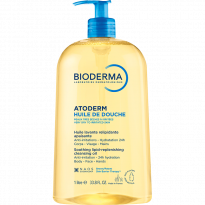Most dermatologists explain that the management of atopic dermatitis is multi-dimensional2. Dr Magali Bourrel-Bouttaz, Dermatologist, is convinced that “parents are the cornerstone of atopic dermatitis management in children. Key players in the process, they should be persuaded of the benefits of skincare products; most importantly, they should understand how the disease works. Parents should be confident in daily skincare products as well as in treatments and their ability to implement best practices and teach them to their children”. She also emphasises that “parents should stop feeling guilty. They aren’t responsible for their child’s disease. The modern world has transformed the skin of certain children, making it more permeable to harsh external factors”.
The daily love and gentle attention that parents show their children are essential to successfully manage atopic dermatitis. A great deal of patience and consistency is required when it comes to cleansing and skincare practices.
Remember that you’re not alone. There are solutions that can help soothe itchy skin and make life easier for the whole family3.













